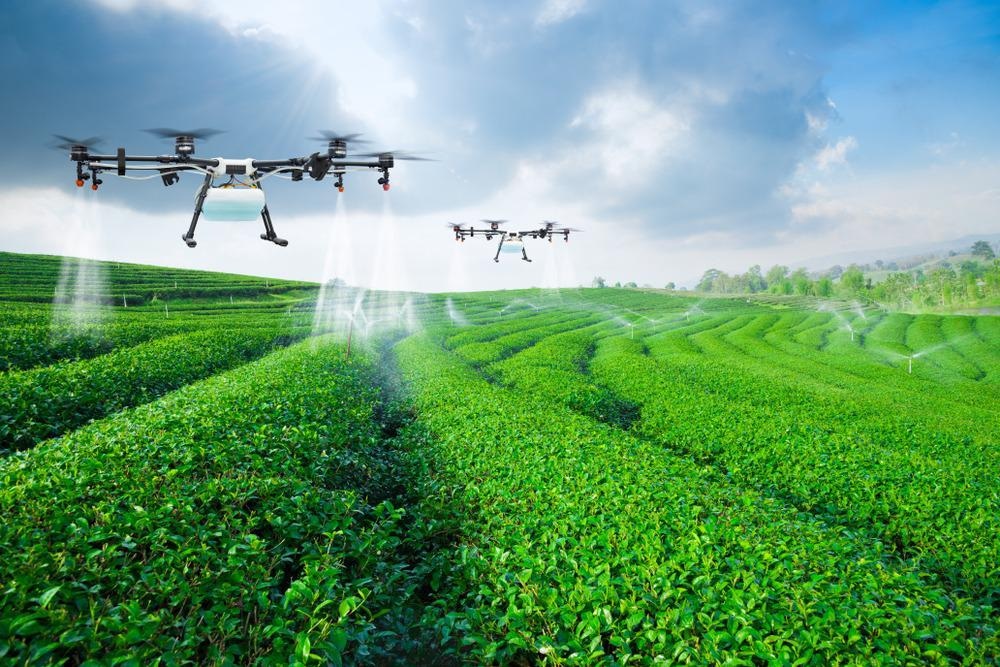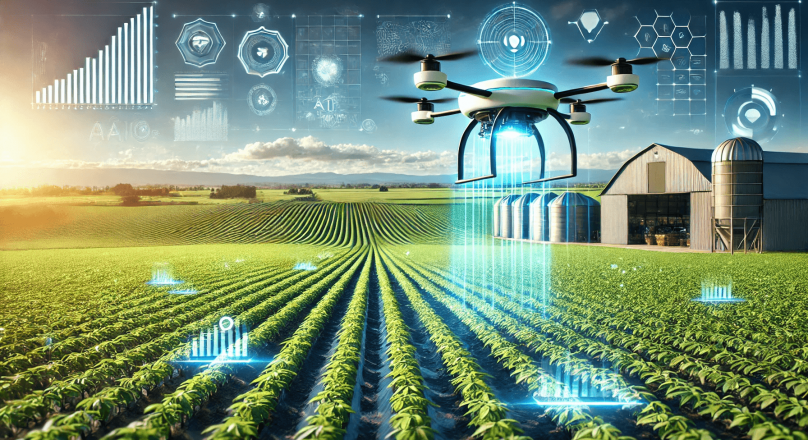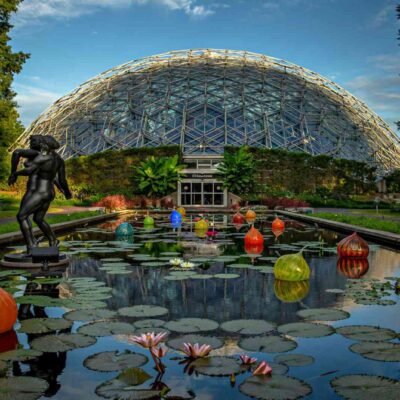
Farming in the United States is changing fast. New technology is helping farmers grow more food, save time, and protect the environment. Among the most powerful tools in modern farming are Artificial Intelligence (AI) and drones.
These tools are turning traditional farming into smart farming, where data, machines, and science come together to help farmers make better decisions. In this article, we’ll explore how U.S. farmers are using AI and drones to grow crops more efficiently, save money, and feed more people.
Table of Contents
What Is Smart Farming?
Smart farming means using modern technology to improve agricultural practices. Instead of relying only on experience and weather reports, farmers now use data, sensors, machines, and software to decide what to plant, when to water, and how to protect crops from disease.
AI and drones are two of the most popular tools in this shift. Let’s break down how they work on the farm.

What AI Does on a Farm
Artificial Intelligence (AI) refers to computer systems that can learn, predict, and make decisions. On farms, AI is used in many ways:
1. Crop Monitoring
AI systems collect and analyze data from sensors, cameras, and satellites to monitor crop health. These tools can spot diseases, pests, or nutrient shortages early—often before the farmer can see them with their eyes.
2. Predicting Weather and Yield
AI tools can study weather patterns and help farmers plan for droughts or heavy rains. They can also predict how much crop yield a farmer might get from a field, allowing better planning and marketing.
3. Smart Irrigation
Some farms use AI-powered irrigation systems that adjust water use based on soil moisture and weather forecasts. This reduces water waste and keeps crops healthy.
4. Automated Machinery
Tractors and harvesters can now be guided by AI, reducing human effort and making fieldwork more accurate and faster.
How Drones Are Changing the Game
Drones, also known as UAVs (Unmanned Aerial Vehicles), are flying machines that take photos, videos, and collect data. On farms, drones offer an eye in the sky, providing a fast and detailed look at large fields.
1. Field Mapping and Surveying
Drones can fly over acres of land and create 3D maps and topographic data. This helps farmers understand soil types, drainage issues, and which areas need special attention.
2. Crop Health Analysis
Equipped with special cameras, drones can scan for plant stress, disease, or pest attacks using color data that humans can’t see. This lets farmers act early to protect their crops.
3. Precision Spraying
Some drones can spray fertilizers or pesticides only where needed, instead of covering the whole field. This saves chemicals and protects the environment.
4. Livestock Monitoring
On cattle farms, drones are used to check on animals, find lost livestock, or even count the herd—all from the air.
Real Examples from U.S. Farms
Many U.S. farmers are already using AI and drones. Here are a few real-life stories:
- In California, almond and grape farmers use AI to decide the best time to irrigate, saving thousands of gallons of water.
- A wheat farmer in Kansas uses drones to check for pests and diseases across 500 acres in under an hour, work that would normally take days on foot.
- In Iowa, corn farmers use AI-powered software to predict harvest yields and adjust fertilizer levels to avoid waste.
These stories show that AI and drones are not just for big tech companies—they are now essential tools for small and medium farms too.
The Benefits: Why Farmers Are Adopting Tech
Here are the main reasons U.S. farmers are turning to AI and drones:
- Increased Efficiency: Machines do in hours what used to take days.
- Cost Savings: Less money is spent on water, fertilizers, and pesticides.
- Higher Yields: Early detection of problems means healthier crops and more food.
- Better Environmental Protection: Targeted spraying and water use help protect nature.
- Data-Driven Decisions: Farmers can make choices based on real numbers, not just guesswork.
The Challenges Farmers Face
While AI and drones offer many advantages, there are also some challenges:
- High Initial Cost: Buying drones or smart tools can be expensive.
- Training Required: Farmers must learn how to use these new systems.
- Internet Access: Some rural areas don’t have strong internet, which is needed for real-time data sharing.
- Data Security: Farmers need to protect their data from being misused.
Despite these challenges, many farmers say the long-term benefits are worth it.
The Future of AI and Drones in U.S. Farming
Experts believe that AI and drones will become even more common in the next 5 to 10 years. New tools will be cheaper and easier to use. As more farmers share success stories, others will feel confident to try.
Future developments may include:
- Fully autonomous tractors and harvesters
- AI tools that talk to farmers in real-time
- Drones that plant seeds or pollinate crops
- Blockchain and AI combined to track food from farm to table
The goal is simple: produce more food with fewer resources, while keeping the environment safe.
Final Thoughts
The use of AI and drones is changing how America grows its food. From small family farms to large commercial operations, technology is helping farmers be smarter, faster, and more efficient. This is not just a trend—it’s the future of agriculture.
Farmers who adapt early are already seeing the rewards: higher yields, lower costs, and better control over their land. While challenges remain, the path forward is clear. Smart farming powered by AI and drones is here to stay, and it’s helping feed a growing world.
Read More :-Top 10 Tech Hubs in the USA Outside Silicon Valley






